Through this guide, we’re going to take a deep dive into Mushroom Gills & some other spore-producing surfaces found on mushrooms.
As a passionate forager, there’s nothing quite as exhilarating as discovering a hidden treasure in the form of a wild mushroom. These fascinating organisms come in a myriad of shapes, sizes, and colors, but one of the key features that sets them apart is their method of spore dispersal.
Spores, the equivalent of seeds in fungi, are produced and distributed through various structures, such as gills, pores, teeth, and other intricate surfaces.
In this article, we will delve into the captivating world of mushroom gills, exploring their different types and attachments, and uncovering the reasons why mushrooms rely on these unique spore-producing surfaces.
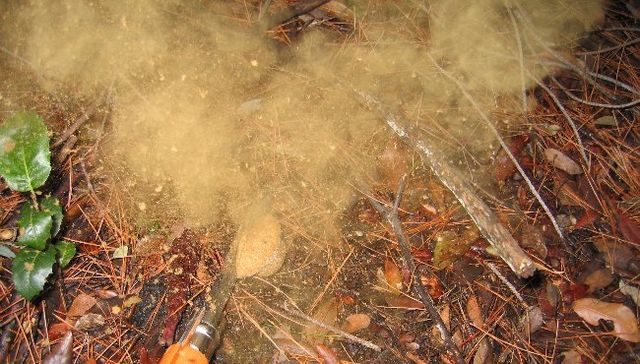
Understanding Mushroom Spore Dispersal: The Significance of Mushroom Gills
Before we dive into the world of mushroom gills, let’s take a moment to understand why mushrooms need these specialized structures to disperse their spores. Spores are the reproductive cells of fungi, akin to seeds in plants. Just like plants rely on wind, animals, or water to disperse their seeds, mushrooms have evolved various mechanisms to ensure the widespread distribution of their spores. These mechanisms increase the chances of spores germinating, fusing with compatible spores, and ultimately giving rise to new mycelium, the interconnected network of fungal threads that form the foundation of mushrooms.
Exploring Mushroom Gills: The Thin Veils of Life
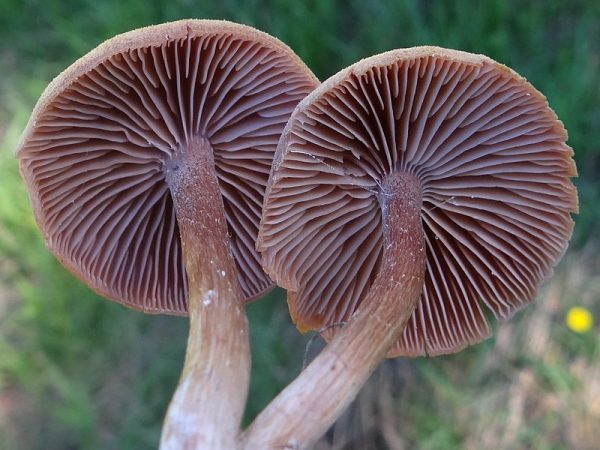
Gills are one of the most common structures used by mushrooms for spore dispersal. These thin, papery veils hang vertically beneath the cap, resembling delicate curtains that conceal the mushroom’s reproductive prowess.
The sole purpose of mushroom gills, also known as lamellae, is to produce and release spores. When millions of spores are dropped from the gills, they are often carried away by wind currents, ensuring their wide distribution.
The Various Types of Mushroom Gills Attachment
Gill attachment, or how the mushroom gills are connected to the stem, is a crucial characteristic when identifying mushrooms. Mycologists have categorized gill attachment into different types, each with its own distinct features. Let’s explore these types individually, starting with free gills, moving on to attached gills, and finally uncovering some unique variations.
Free Gills: Liberated from Stem Attachment

Free gills, as the name suggests, do not attach to the stem of the mushroom. Instead, they radiate outwards from the cap, creating a noticeable space between the gill attachment and the stem. This type of mushroom gill attachment is commonly observed in mushrooms such as Agaricus, including popular culinary varieties like Portobello, Crimini, and button mushrooms. The absence of stem attachment gives these mushrooms a distinct appearance, making them easily recognizable.
Attached Gills: Embracing the Stem
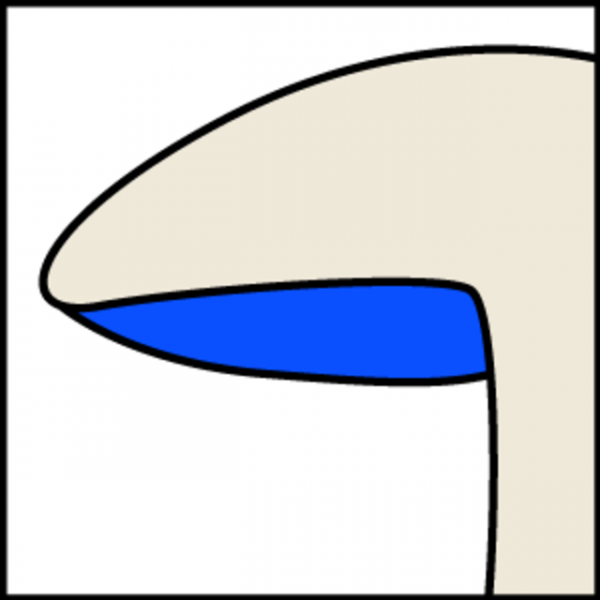
Attached gills, also known as adnate gills, are more commonly seen in mushrooms. In this type of attachment, the gills are broadly connected to the stem, without any noticeable gap. These type of mushroom gills may run straight into the stem or slightly curve downwards before attaching. This category of gill attachment is often considered the default, as many mushrooms exhibit this characteristic.
Decurrent Gills: Running Down the Stem

Decurrent mushroom gills are a fascinating variation of gill attachment. In this case, the gills extend beyond their attachment point and run down the stem, below the level of the main part of the gills. The edge of a decurrent gill is often slanted, giving the appearance of a widening gill as it approaches the stem. This type of attachment is commonly observed in mushrooms such as Tricholoma species.
Notched Gills: A Delicate Balance

Notched gills are a close cousin of attached gills, also known as emarginate, with a slight variation in their attachment pattern. These mushroom gills diminish earlier and stay narrow for a short distance before attaching to the stem. The result is a ring of narrow gill attachment around the stem, adding an intriguing aesthetic touch to the mushroom. The delicate balance between attachment and freedom is a distinguishing feature of these mushrooms.
Don’t confuse Mushroom Gills for gill-like Ridges
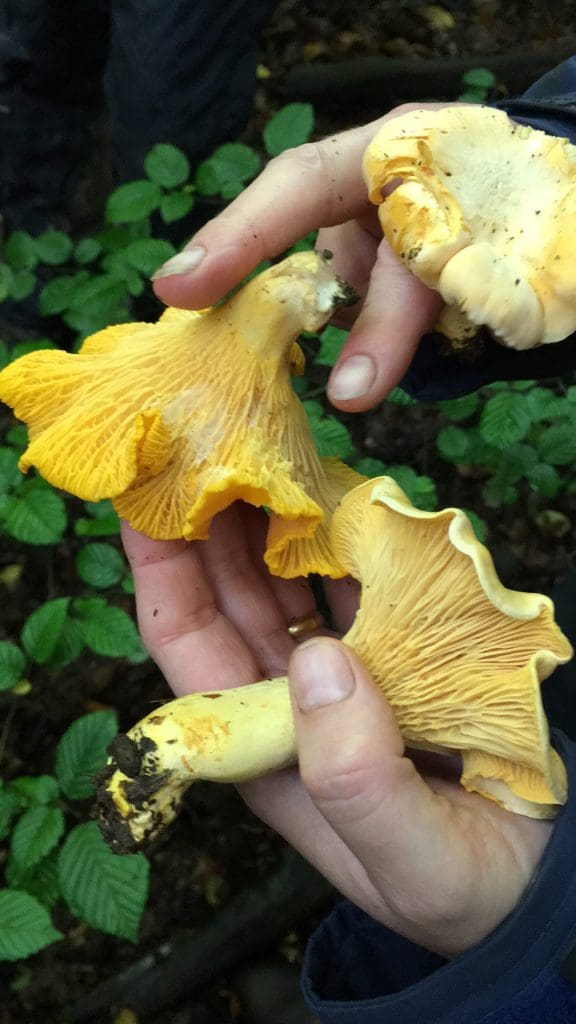
Some mushrooms produce gill-like structures that aren’t actually gills at all. The underside of the cap and a little down the stem tend to look more like the folds of a raisin than the edge of pages in a book. The most common varieties like this are the chanterelle mushrooms which are gourmet edibles.
Unveiling the Diversity of Mushroom Spore-Producing Surfaces
While mushroom gills are the most well-known spore-producing surfaces in mushrooms, they are not the only ones. The fungal world is teeming with diverse structures designed to disperse spores. Let’s explore some of these fascinating alternatives to gills and the mushrooms that possess them.
Pored Mushrooms: Pores as Portals
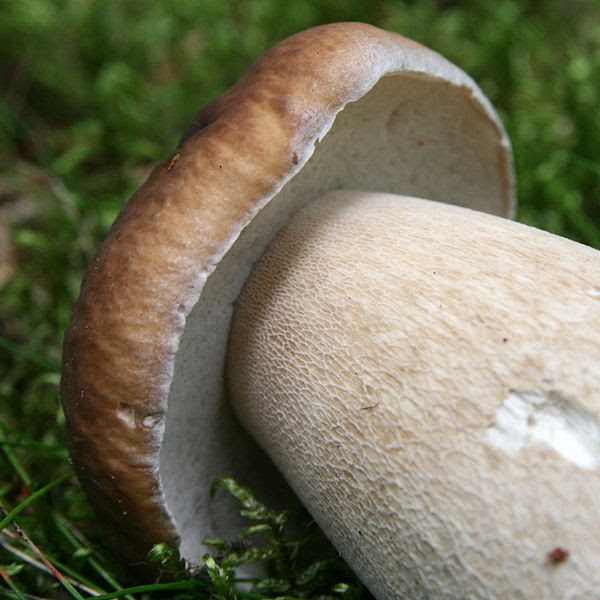
Members of the family Boletaceae, including the popular edible mushroom Boletus edulis, exhibit a unique spore-producing surface known as pores. Instead of mushroom gills, their undersides are adorned with tiny holes called pores. These pores are the openings of a network of tubes within the mushroom’s cap. Spores are produced on the sides of these tubes and are eventually released through the pores. Wind, animals, and insects aid in the dispersal of these spores, ensuring the survival and propagation of pored mushrooms.
Toothed Mushrooms: Nature’s Dentists
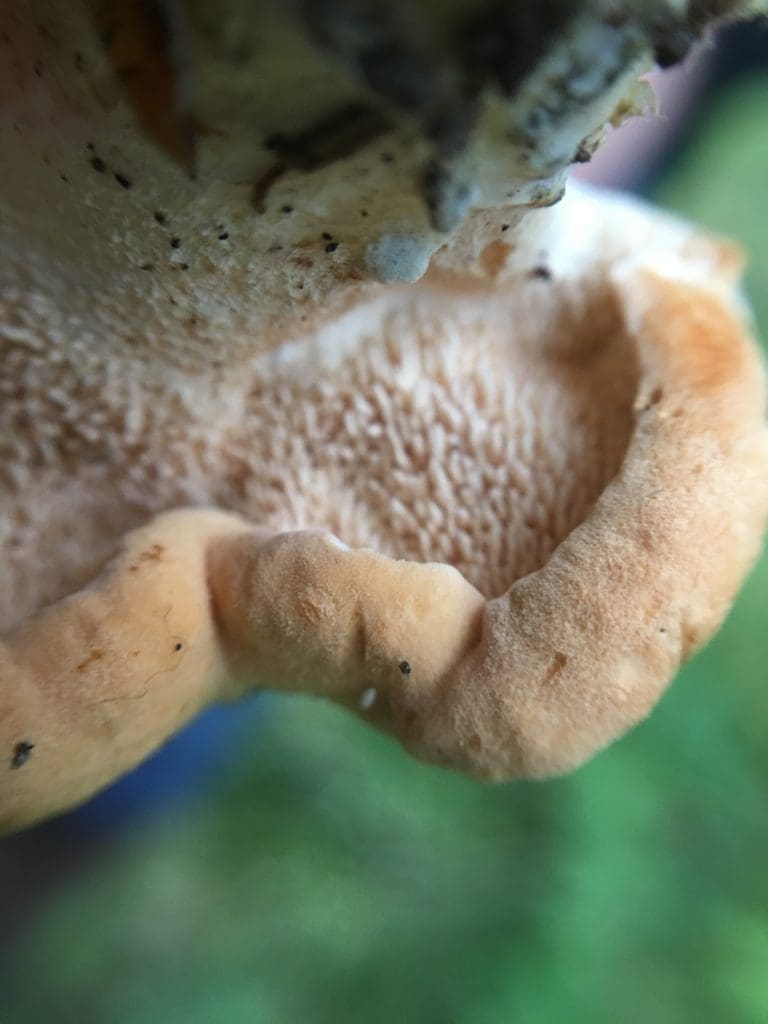
Toothed mushrooms, although less common, possess a striking feature that sets them apart from other mushroom varieties. Instead of gills or pores, these mushrooms develop tooth-like structures on the undersides of their caps. The teeth, often referred to as spines, are the spore-producing surfaces in these mushrooms. The main one to find here is the hedgehog mushroom. Their unique appearance and habitat preferences make them a thrilling find for mushroom enthusiasts.
The Intricate Dance of Spore Dispersal
As we have explored the various types of gill attachment and other spore-producing surfaces, it becomes evident that mushrooms have mastered the art of spore dispersal. The diverse array of structures, from gills to pores and teeth, ensures the wide distribution of spores, increasing the chances of successful germination and the growth of new mycelium. Each attachment type and surface structure has evolved to suit specific ecological niches and optimize the chances of survival for these incredible organisms.
So, the next time you embark on a foraging adventure in search of wild mushrooms, take a moment to appreciate the intricate dance of spore dispersal happening right beneath your feet. The gills, pores, teeth, and other spore-producing surfaces are a testament to the remarkable adaptability and diversity of fungi.
With each discovery, you become part of a fascinating world, unlocking the secrets of mushroom gills and the myriad ways in which these organisms ensure their continued existence.
Happy foraging





